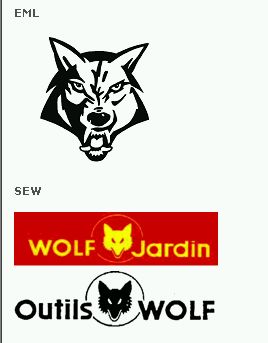The EU General Court has ruled that demonstrating detriment to a trade mark's distinctive character does not require proof of a change in economic behaviour of the average consumer of the goods or services for which the mark is registered. Although this point had been considered by the ECJ in a previous case (INTELMARK), the EU General Court interpreted Article 8(5) of the Community Trade Mark Regulation differently, finding that such effect would be inevitable following the dispersal of the identity of the earlier mark as a result of dilution, such that no separate evidence was required.
Background
In March 2006, Entec Industries Ltd (Entec) filed an application for registration of a Community trade mark at OHIM in respect of machinery and tools intended for professional gardening. In December 2006, Societe Elmar Wolf (SEW), the intervener in the case, filed a notice of opposition against the registration. The opposition was based on SEW marks registered in 1948 and 1999. Entec assigned its application to Environmental Manufacturing LLP (EML) in September 2007. The marks in dispute were:
To view the article in full, please see below:
Full Article

SEW opposed EML's registration on the grounds set out in
Articles 8(1)(b) and 8(5) of Regulation No 207/2009 (the
CTM Regulation), also requesting that SEW adduce evidence
of use of the earlier marks under Article 42 of the CTM Regulation.
The Opposition Division dismissed this opposition in January 2010,
finding that there was no likelihood of confusion between the marks
or evidence demonstrating detriment to the repute of the earlier
marks (or any unfair advantage gained from them). SEW successfully
appealed this decision, with the Second Board of Appeal of OHIM
(the Board) holding that the relevant public could
establish a link between the marks and that there was some
similarity between them. The Board also considered that EML's
mark could dilute the unique image of SEW's marks and take
unfair advantage of their distinctive character or reputation, as
well as finding that SEW's marks had been put to genuine and
continuous use for the protected goods. EML then appealed to the
General Court of the EU (EUGC) for annulment of
the Board's decision.
The EUGC upheld the Board's decision. EML's first
argument, that SEW had not demonstrated genuine use of its marks
for domestic as opposed to professional gardening equipment, was
dismissed - the EUGC considered that the two categories of goods
were not essentially different.
EML's second line of argument, infringement of Article 8(5) of
the CTM Regulation, gave rise to a more controversial finding. A
key point in proving infringement was the risk of detriment caused
to the distinctive character of the earlier marks, or
'dilution'. In Case C-252-07 Intel Corp Inc v CPM UK
Ltd, the ECJ held that such detriment arose where the earlier
mark's ability to identify the goods or services for which it
was registered and used as those of the proprietor was weakened,
since use of the later mark led to dispersion of the identity and
hold that the earlier mark had on the public mind. Proving
detriment also required evidence of a consequential change in the
economic behaviour of the average consumer of the goods or services
for which the earlier mark was registered.
The EUGC considered that a proprietor had to adduce prima
facie evidence of a future, not necessarily present, risk of
detriment. However, the proprietor did not have to show an
additional effect on the economic behaviour of the average
consumer. The EUGC's interpretation of Intel was that
change in a consumer's economic behaviour was established as an
inherent result of demonstrating that a mark had been weakened in
the manner set out above, rather than an issue that had to be
proven separately.
Comment
The finding that EML's use of a wolf mark could be detrimental to the distinctive character of SEW's marks is unsurprising, despite arguments that SEW's marks represented a more amiable canine. However, the EUGC decision appears to directly conflict with the ECJ ruling that proof of dilution requires evidence of a consequential change in the economic behaviour of the average consumer. This interpretation lowers the standard of proof for dilution and therefore should boost a trade mark owner's ability to protect their marks.
This article was written for Law-Now, CMS Cameron McKenna's free online information service. To register for Law-Now, please go to www.law-now.com/law-now/mondaq
Law-Now information is for general purposes and guidance only. The information and opinions expressed in all Law-Now articles are not necessarily comprehensive and do not purport to give professional or legal advice. All Law-Now information relates to circumstances prevailing at the date of its original publication and may not have been updated to reflect subsequent developments.
The original publication date for this article was 28/05/2012.
